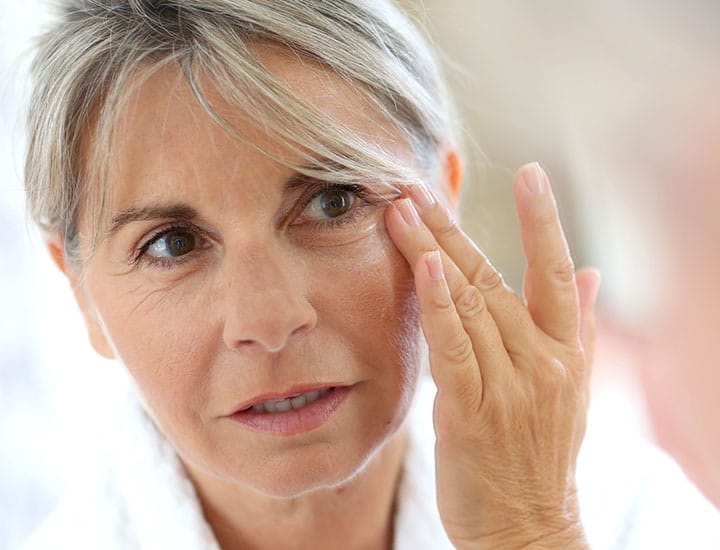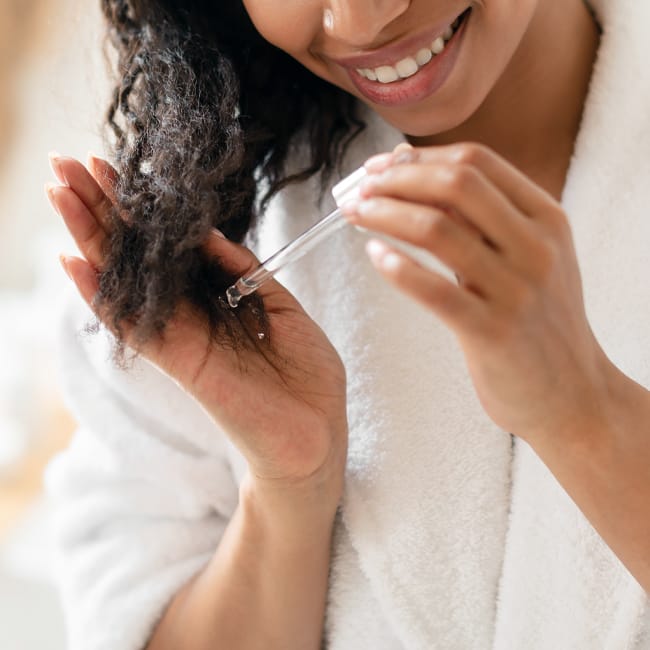First, skincare products enriched with snail mucin took over the beauty world. And then, following on its trail came the latest skincare craze: slugging. Slugging is kind of exactly what it sounds like — similar to how a slug produces a thick secretion that coats its body and whatever pavement it touches, slugging in skincare involves sealing your nightly cleanser-serum-moisturizer routine with a layer of occlusive product such as Vaseline or Aquaphor. The goal of slugging is to create an intensely hydrating barrier that helps products work more effectively while protecting your skin against moisture loss.
In many cases, slugging works wonders, especially if you have dry, parched skin or post-procedure skin. But slugging isn’t without its risks, namely clogged pores that can lead to acne and other issues. And if you’re thinking of slugging under your eyes, heed this warning from skincare experts before you grab that tub of Vaseline.


First: the benefits of under-eye slugging
Slugging isn’t without its benefits, which is one of the reasons why it continues to be an uber popular method. “This technique can retain moisture and offer a protective barrier to the delicate skin under the eyes,” says Beauty and Hair Expert Caleb Backe at Maple Holistics.
According to Backe, some of its benefits include:
** Hydration: By preventing dryness, which can contribute to wrinkles and fine lines, under-eye slugging can maintain the skin under the eyes hydrated.

** Nourishment: By employing an occlusive moisturizer or oil, you can provide the skin under your eyes with nourishing components like vitamins, antioxidants, and essential fatty acids.
** Protection: The occlusive layer can serve as a defense against environmental pollutants and irritants, which can help prevent premature aging and skin harm.

Risks of under-eye slugging
With all of that said, there are some potential drawback that can come with under-eye slugging, Backe says. They include:
** Milia: “Milia [are] small white bumps that may develop on the skin beneath the eyes when hair follicles become clogged with dead skin cells and oil,” Backe says. [They] can be increased by under-eye slugging, especially if you're prone to the condition.”

** Puffiness: If you’ve been waking up with puffier eyes than usual since you began slugging, this may not be a coincidence. “If you have a tendency to retain water, applying a thick layer of moisturizer or oil under your eyes can make your skin appear puffy,” Backe says.
** Acne: “If you have oily skin or are prone to acne, under-eye slugging may not be suitable for you,” Backe notes. “The occlusive layer can trap bacteria and oil, which can lead to breakouts.”

Effective ways to keep the under-eye area hydrated
Even though slugging can work well for lots of people, it’s not for everyone. If you have found that under-eye slugging leaves your skin worse for the wear, you have plenty of other options that can boost your skin’s hydration levels and leave you looking and feeling your absolute best in the morning.
“First and foremost, drinking enough water is crucial for flushing out toxins and improving the overall appearance of your skin,” Backe stresses. “Additionally, using a hydrating eye cream that contains ingredients like hyaluronic acid, glycerin, and ceramides can help to keep the skin under your eyes hydrated. It's essential to choose products formulated specifically for the under-eye area to avoid irritation.”
To avoid stripping your skin of natural oils and causing dryness, Backe says it’s best to use gentle cleansers and lukewarm water when cleansing the skin around your eyes. “Applying a cold compress, such as a chilled eye mask or a washcloth soaked in cold water can help to reduce puffiness and improve circulation,” Backe says. “Lastly, getting enough restful sleep each night is crucial for maintaining healthy-looking skin under your eyes, as lack of sleep can contribute to dark circles and puffiness.”
Under-eye slugging has plenty of benefits, but its downsides may prove it’s not the right technique for you.


























